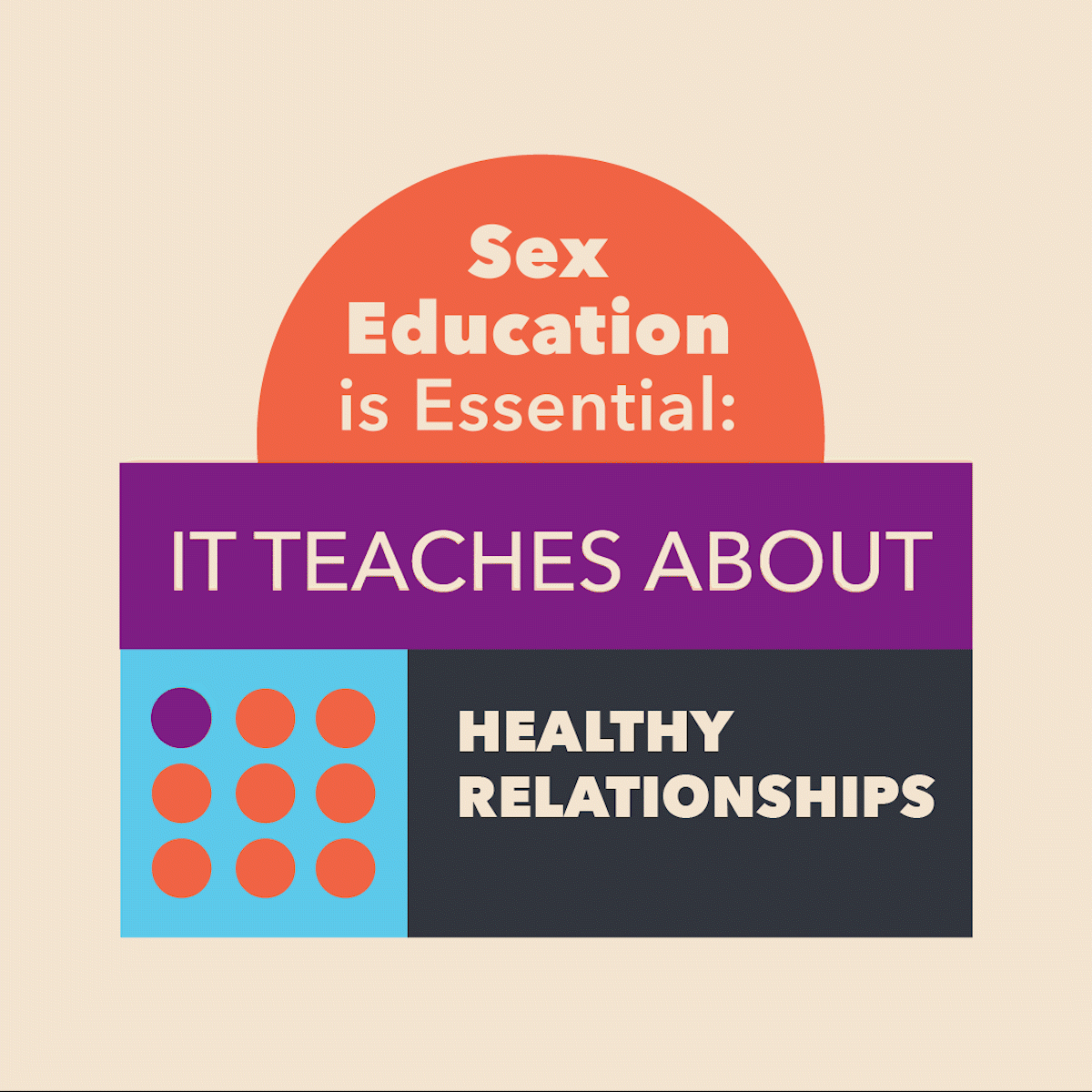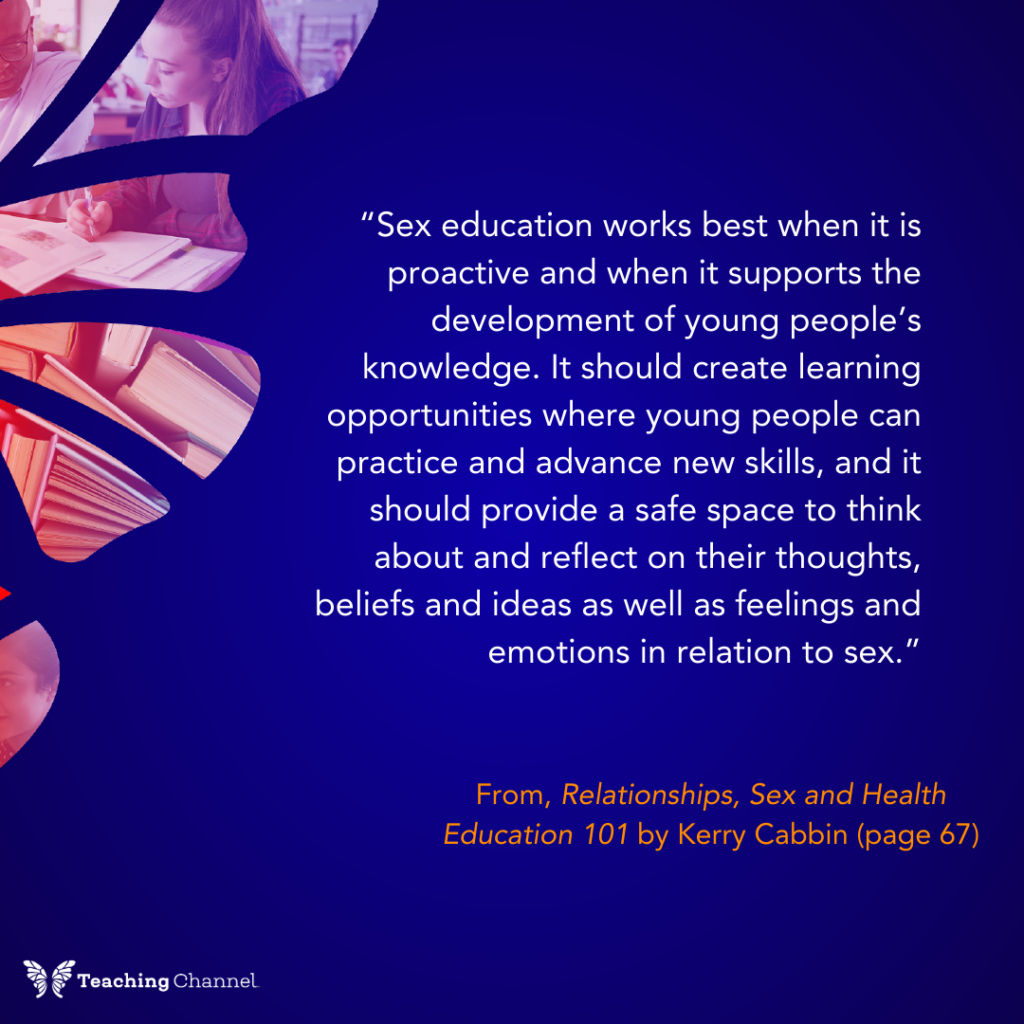Teaching Sex Education can make us weak in the knees! Think back to how you learned about sex and you may recall awkward conversations, cringey explanations, and the feeling of wanting to fall through the floor (as in, disappear!). We know that talking about contraception, consent, condoms, and everything else related to sex is crucial for students to gain a clear understanding of their values, how to be safe, and what’s at stake.

Below are 5 strategies to bolster your sex education repertoire!
Strategy 1: Environment (aka: Create a safe space for students.)
As the real estate expression goes, “Location, location, location,” but in this case, we want to upgrade the phrase to, “Environment, environment, environment!” As teachers, how can we create a setting that promises empathy and understanding? The resources below include ideas for creating a classroom space so students feel safe and supported.
- “5 Ways to Create a Safe Space in Your Classroom,” from Teaching Channel
- “How to Create a Safe Space to Discuss Sexual and Reproductive Health,” from GlobalGirlsGlow
Strategy 2: Active listening (aka: Demonstrate your listening skills.)
Once you’ve created an environment where students feel safe and supported, active listening comes into play! The honed skill of active listening implies the use of visual and verbal cues to communicate to the speaker our engagement and interest in hearing what they have to say. Nodding and sustained eye-contact are two physical cues the speaker can see, and statements like, “I am listening,” “I believe you,” and “uh-huh,” are ways to verbally communicate our commitment to listening. The resources below provide more tips about the impact of active listening:
- “7 Active Listening Techniques for Better Communication,” from VeryWellMind
- “The Value of Active Listening,” by Judy Willis

Strategy 3: Suspend judgment (aka: Approach what you learn from students with curiosity.)
When teaching a topic like sex education, suspending judgment is simply the most supportive and reassuring action we can take if we want students to feel safe to open up. Each of us have our own ideas, values, and life experiences, and it is crucial to honor and respect other people’s choices, as long as students are behaving in ways that are respectful and safe. Dig into the resources below to learn about holding space, body language, and more.
- “Builiding Community from Student Driven Conversations,” by Molly Josephs
- “How to Be Non-judgmental When Talking About Sex,” from Sex Ed East
Strategy 4: Have fun (aka: Laugh a little!)
Comedic relief is just that: relief from the stress of whatever it is we are talking about or experiencing. Like “letting steam out of a pot,” adding humor can look like: a (tasteful) joke during a somber event, observing something that makes us laugh (a pet rolling in the grass), or admitting when a conversation is awkward (like talking about sex). Regardless of what it is, as long as we are respectful, humor can save the day! The resources below provide ideas for using humor to relieve tension.
- “Does Humor Belong in Sex Education?” from HealthyTeenNetwork
- “It’s Not Funny, Or Is It?” from SlowChatHealth–The Global Blog for Health Ed Teachers
Strategy 5: Educate (aka: Practice, facilitate, learn!)
Can teaching sex ed be challenging? Of course! Like anything we teach, with practice and experience, we improve our skills. And, when the going gets tough, there are resources we can lean on! (Can you say, “videos”?). The links below provide an abundance of ideas about why, what, when, and how to teach sex ed that do an amazing job of explaining sexual health in language that is real, honest, and straightforward.
Why:
“5 Reasons Why You Need to Teach Comprehensive Sex Ed” from Project School Wellness
What:
“Characteristics of An Effective Health Education Curriculum” from the CDC
When:
“Mayo Clinic Q and A: Talking to Young Children about Anatomy and Sex,” from the Mayo Clinic
“Teens, Sex, and Dating,” from Child Mind
How: Videos about pregnancy, birth control, puberty, etc., from Planned Parenthood
To learn more strategies and resources about educating students on this topic, Teaching Channel offers course 5361: Teaching Relationships, Health, and Sex Education, a comprehensive look at the ways teachers, counselors, and health educators can effectively address the complex and important subjects of relationships, sex, and health education (RSE). Empower your students by providing accurate and affirming sex and relationship education essentials for their health and well-being!
About the Author

Susanne Leslie is a Professional Learning Specialist at Teaching Channel. She holds a B.A. in Sociology and a Master’s in Education. As a parent educator, Susanne’s specialty is Culture and Early Childhood instruction. In her current role, she writes courses and content, focusing on our Hybrid Blended Learning courses.
Fun Fact: Susanne has jumped out of two (perfectly good) airplanes!







